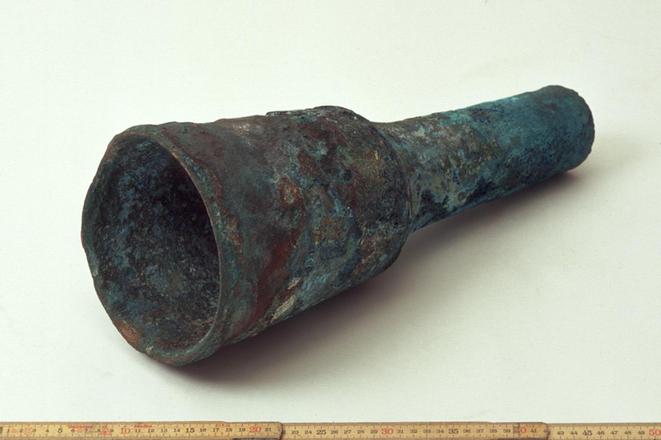In the 14th century, an unknown ship foundered off the south-western coast of Sweden, probably because it hit a skerry - a small rocky islet or reef. It carried a cannon, loaded and ready to use in battle as the sea was dangerous and there was always a possibility of a pirate raid.
The ship and this cannon sank to the sea floor, waiting hundreds of years to be discovered.
Although it was in 2001 that the gun was found by a recreational diver, only now an international team of scientists have studied what, according to them, "might be Europe’s oldest shipboard cannon".
A chemical analysis of the metal showed that part of the material used to produce the cannon was mined in Slovakia.
Brittle cannon
Having been exposed to maritime environment for approximately 600 years, the exterior of the 47.5-centimetre long and roughly funnel-shaped gun is severely corroded and pitted. However, the inside is a different story.
A piece of cloth was discovered within, most likely the remains of a cartouche-a casing with the powder charge needed for its firing.
This is what leads the team to believe that the cannon was used on the ship rather than transported to land. Using radiocarbon dating, it was determined that the cloth dated to the 14th century, making it one of the earliest of its kind, possibly the oldest ship cannon on record in Europe.
A chemical analysis showed that the gun was cast using a copper alloy with a small amount of lead. Scientists say that it is far from optimal and it is likely that the cannon would have cracked if used for a prolonged time.
"Clearly, the person who cast the cannon did not have the necessary knowledge and understanding of the properties of various copper alloys," says lead scientist Staffan von Arbin, according to the University of Gothenburg website.
Anti-personnel weapon
The team says that based on the trace element composition, the copper used to cast the gun was mined near Banská Bystrica, central Slovakia, while the lead most likely came from England or the area along the borders of Poland and the Czech Republic.
Speaking to the Live Science website, von Arbin says that rather than shooting cannonballs, this early cannon most likely fired stone shot. It was not designed to sink vessels, but to clear decks: an anti-personnel gun.
According to the scientist, guns of this design were the first type used in Europe after the introduction of the technology in the 13th century.



 The cannon was found off the south-western coast of Sweden. (source: Bo Niklasson/Bohusläns Museum)
The cannon was found off the south-western coast of Sweden. (source: Bo Niklasson/Bohusläns Museum)